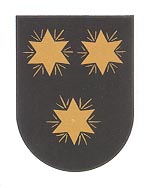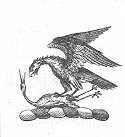

The Moir Family
Written and Research By Margaret Odrowaz-Sypniewska, B.F.A.

Moir is from the Gaelic mòir, meaning "big." The surname is prominent in Aberdeen, where it is pronounced More (also an early spelling of the name). The Irish form is Moran.
Variants of the name are More, Mure, Muir, and Moor.

The Moirs are associated with the Gordon Clan, after the Laird of the clan dies without a male heir (in 1700). Many Muirs/Moirs immigrate to the Americas, Australia, and Canada. Some Moirs were also absorbed by the Campbells, Donalds, Sinclairs, and Stewart clans.
The Gordons were an Anglo-Norman family and they had lands in Berwickshire by the 12th century. There was a chief of the family Mures of Rowallan, Ayrshire, Scotland in the 1200's. One of the Muir heiresses marries a Leslie Chief and her land passes through her husband's line.
Adam Gordon was a follower of John, the Red Comyn. When Robert the Bruce killed Comyn, Adam Gordon then supported him and Robert made him an ambassador to the Pope in 1320, and gave him the old MacDuff lands at Strathbogie in Aberdeenshire, where the Huntley Castle stands.
A Sir William Muir was knighted by David II, circa 1367. Gilchrist Muir led a battle that drove the Vikings back to the sea and was given the lands of Rowallan Castle near Kilmarnock in Ayrshire, Scotland. Gilchrist married the daughter of Sir Walter Cumyn. Their grandaughter, Elizabeth Mure of Rowallan, daughter of Sir Adam Mure and Joanna Danzielstour, married the future king Robert II, son of Marjorie Bruce and Walter Stewart, the High Stewart of Scotland, in 1346. Elizabeth's and Robert's daughter, Jean Stewart, married Sir John Lyon. Thane of Glamis. Their issue were the Earls of Strathmore and Kinghorne. The Queen Mother, Elizabeth, is from this line, as is her daughter Elizabeth II.
The other children of Elizabeth Mure were:
Robert II's wife (2) was Euphemia of Ross. Her children were:
Some think that Muir and Moir are connected. Muir is from the Gaelic mordha meaning "majestic." Muir also means moor or wasteland, which seems to contradict "majestic." Muir is one of the ten most prominent names in Orkney.
SOME MOIR CRESTS:

Moran is the anglicization of two distinct Irish names, O'Mòran, from mòr and O'Mughrdin. O'Mòrain is first found in Mayo County, near the modern town of Ballina, where the eponymous (giving one's name to a clan) ancestor Mòran held power.
Robertus More was an Aberdeen burgess in 1317. Reginald More was a canon of Aderdeen in 1366. The name of the family of Moir of Stonywood was in the eighteenth century spelled Moer, More, and Moore.
In Fairbairn's Crests of the Families of Great Britian and Ireland there are the following references:

Moir (Scottish) a negro's head Motto is: Non sibi, sed cunctis (Not just for self, but for all).
Moir (Scottish) a negro's head, couped, proper. Motto: Mediocriter (with moderation) or Sur experance (upon hope).
Moir (Scottish) a Mauritanian's head, couped, proper. Motto: Major opima feret (Let the worthier carry off the prize).
Moir (Scottish) a Mauritanian's head couped (gutee-de-sang/gules, proper). Motto: Major opima feret (Let the worthier carry off the prize).
Moir of Otterburn has argent, three Moors heads couped proper without a bordure counter-undented sable and or.
Moir of Stonniwood has argent three Mauritanian heads: copued and distilling guttes-de-sang/gules.

Robert-Graham Moir, Esquire of Lockie, Scotland, a falcon,proper., armed and belled, or perching on a heron, lying on its back, proper, beaked, and membered, gules Motto: Ne oublie.
 ...
...
Moir (Scottish), out of a cloud, ar arm, from shoulder (fig. left), in hand a branch of laurel, slipped (fig. right). Motto: Virtute non aliter (by virtue, not otherwise). Substitute the laurel branch for the wreath, in left figure.
 ...
...
Moir (Scottish), a mort-head (left fig.), with two legbones (right fig.), in saltier proper. Motto: Non sibi, sed cunctia (For all, not himself). This one would resemble the "Jolly Rodgers" or pirate flag.
The Mures of Caldwell were descended from Sir Reginald More, or Mure, of Abercorn and Cowdams. Sir Reginald was Chamberlain of Scotland as early as 1329, in the first year of the reighn of David II.
The arms of Muir of Caldwell and Muir of Rowallan were the two chief houses of the name in Scotland.
The most ancient of the name was recorded as the Mores of Polkelly near Kilmarnock in Ayr County, Ireland. The male line of Polkelly left no heirs, thus the lineage was passed, by marriage, to the Mores of Rowallan, who acquired their estate from the Lords Comyns.
MY CONNECTION TO THE MOIR NAME:
GENERATION ONE:
John Clark and Isobel Moir were the parents of George Clark, who was christened on February 2, 1801 in Udny, Aberdeenshire, Scotland.
I found a Margaret Moir married to Alexander Bain on October 17, 1776, in Cabrach, Aberdeenshire, Scotland. They had a daughter named Jean McAdam who was christened in 1777. Alexander's first wife was named Isabel McAdams, whom he married August 29, 1765, and apparently died shortly after(source: http://www.mcadamshistory.com/mbirths.html). I have no idea if this might be a member of my family?
HERALDIC COLORS:
Or=gold (or yellow)
argent=silver (or white)
gules=red
vert=green
azure=blue
purpure=purple
sable=black
What is interesting is that the origin of many heraldric charges comes from the Saracens and the Moors. For example, gules comes from the Persian gul, and azure comes from the Persian lazurd.

This page was last updated on March 3, 2005
